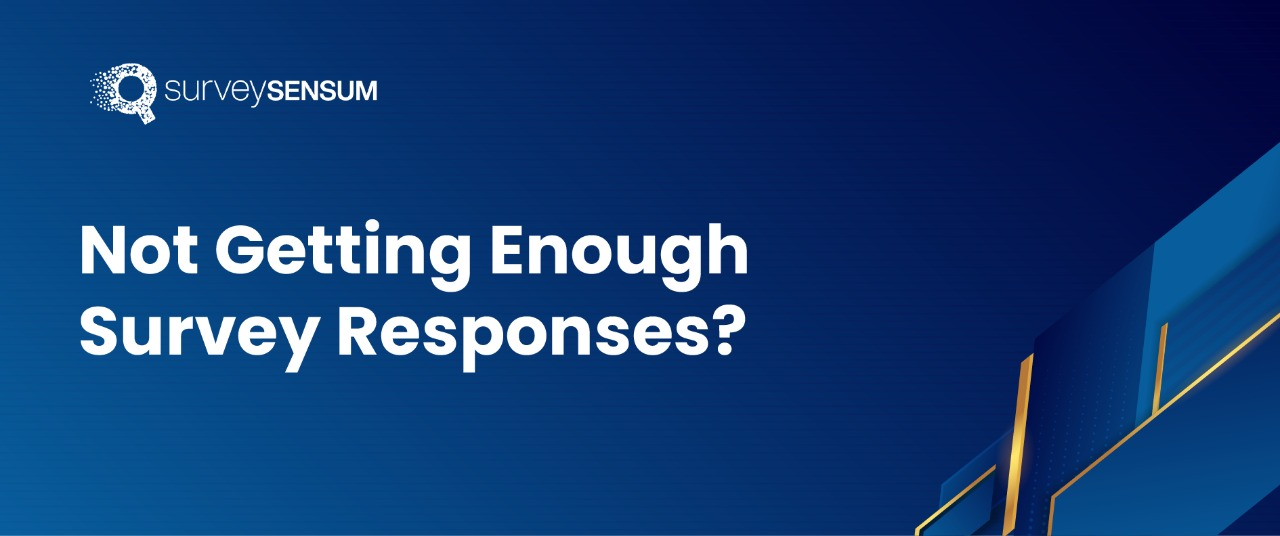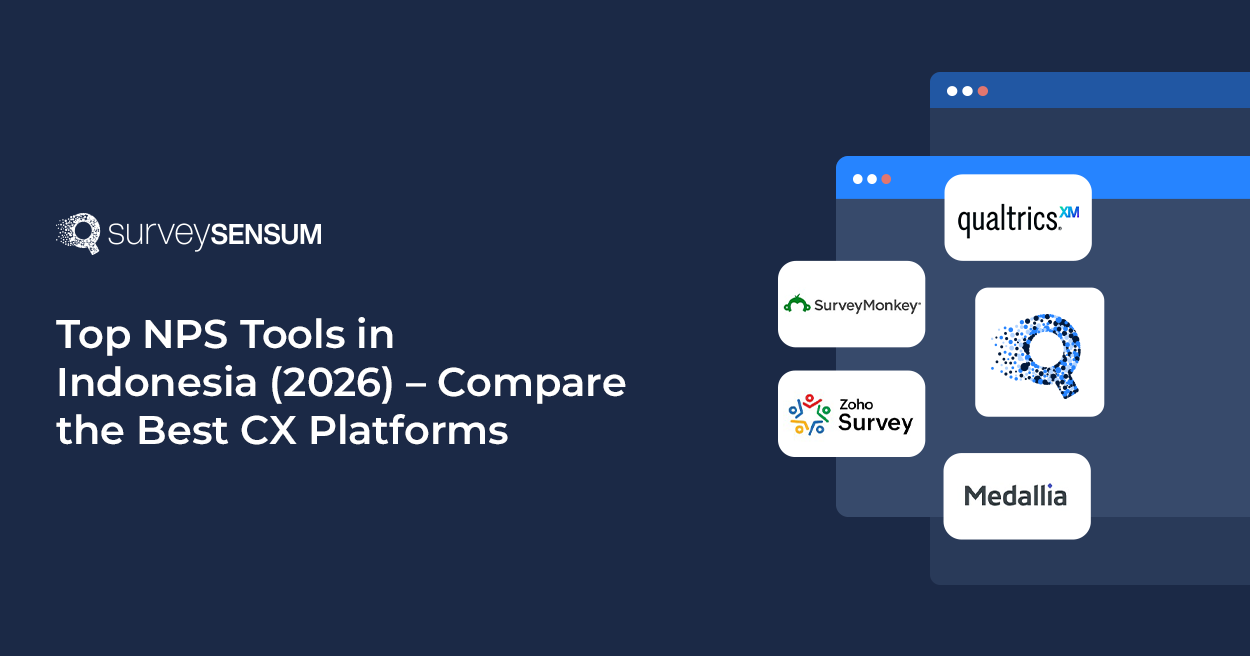

Have you ever answered a survey and felt subtly nudged toward a particular response? If so, you’ve encountered a leading question.
In the world of surveys leading questions can skew results, compromise data integrity, and ultimately lead to misguided decisions.
Leading questions prompt or encourage specific answers, often embedding assumptions or suggestions within their wording. This article dives deep into the nature of leading questions, their various forms, and why avoiding them is crucial for collecting unbiased, accurate data.
From assumptive to suggestive to tag questions, we’ll explore the many faces of leading questions and how to ask neutral, open-ended questions instead with the survey builder. So, join us on this journey to ensure your surveys are designed to capture true, untainted insights.
What are the Leading Questions?

Do you find anything wrong with the above question?
Well, it’s a classic example of a leading question as it presupposes a positive response by assuming that the respondent loves the product.
Leading questions prompt or encourage a specific answer in a survey questionnaire. They often contain information or suggest the desired response, which can influence the respondent’s answer. This can occur through wording that implies a particular response, or by embedding assumptions within the question itself.
Characteristics of Leading Questions:
- Suggestive Wording: The question hints at or directly suggests the desired answer.
- Assumptions: The question includes assumptions that the respondent is prompted to agree with.
- Bias: The question may lead the respondent to answer in a way that confirms the questioner’s beliefs or expectations.
Different Types of Leading Questions

Leading questions can be categorized into various types based on how they guide or influence the respondent’s answer. Here are some common types:
1. Assumptive Leading Questions
These questions contain an assumption that the respondent is prompted to agree with.
Example: “How much did you enjoy the conference?”
→ This question assumes that the respondent enjoyed the conference.
2. Choice-Based Leading Questions
These questions offer limited answer choices, often excluding negative or neutral options.
Example: “Was our service excellent or just good?”
→ This question limits responses to positive options.
3. Suggestive Leading Questions
These questions directly suggest a particular answer.
Example: “You found the training useful, didn’t you?”
→ This question suggests that the respondent should have found the training useful.
4. Yes/No Leading Questions
These questions frame the query in a way that a simple “yes” or “no” answer is implied, often nudging the respondent toward agreement.
Example: “You liked the product, right?”
→ This question suggests that liking the product is the expected answer.
5. Tag Questions
These questions add a tag at the end, which can suggest a desired response.
Example: “The meeting was productive, wasn’t it?”
→ The tag ‘wasn’t it?’ implies agreement in this question.
6. Confirmation Leading Questions
These questions are phrased to confirm something that the questioner assumes to be true.
Example: “You will be available for the meeting tomorrow, correct?”
→ This question implies that availability is expected.
7. Presupposition Leading Questions
These questions presuppose information that has not been confirmed.
Example: “Why did you choose our product over the competitors?”
→ This question presupposes that the respondent chose the product over competitors.
8. Negative Leading Questions
These questions frame the query negatively, leading the respondent towards a specific kind of answer.
Example: “You don’t have any objections to this plan, do you?”
→ This question suggests that there should be no objections.
9. Leading Questions with Embedded Commands
These questions subtly include a command within them.
Example: “How much do you agree with our new policy changes?”
→ This question embeds a command to agree with the policy changes.
Gather valuable & authentic feedback with SurveySensum’s in-built survey templates with pre-designed questions. Sign up for a free trial of SurveySensum today!
Why Should You Avoid Leading Questions?
Avoiding leading questions is crucial for several reasons in a survey design, particularly in contexts where accurate and unbiased information is essential. Here are some key reasons why leading questions should be avoided:
1. Bias and Inaccuracy
Leading questions can introduce bias into the responses, leading to inaccurate data. When respondents are guided toward a particular answer, their true opinions or experiences may not be reflected accurately.
2. Compromised Data Quality
In research, surveys, and interviews, the quality of data is paramount. Leading questions can compromise the validity and reliability of the data, making it less useful for drawing meaningful conclusions or making informed decisions.
3. Reduced Authenticity
Leading questions can prevent respondents from providing authentic and spontaneous answers. This reduces the depth and richness of the information gathered, which is especially problematic in qualitative research.
4. Ethical Concerns
In legal and journalistic contexts, using leading questions can be seen as unethical because it manipulates the respondent and can distort the truth. Ensuring that questions are fair and unbiased is crucial for maintaining ethical standards.
5. Loss of Credibility
If stakeholders, such as clients, customers, or colleagues, recognize that leading questions were used, it can undermine the credibility of the research or the integrity of the interviewer. Trust is essential in any professional relationship, and using leading questions can erode that trust.
6. Misleading Conclusions
Decisions based on biased or inaccurate data can lead to misguided conclusions. For businesses, this might mean making poor strategic decisions; for researchers, it could mean publishing flawed studies; and for legal professionals, it could mean misrepresenting facts.
7. Impact on Respondent’s Experience
Leading questions can make respondents feel manipulated or uncomfortable, potentially damaging their willingness to participate honestly. This can affect the response rate and the overall quality of feedback.
How to Avoid Leading Questions
To avoid the pitfalls of leading questions, use open-ended, neutral, and clear questions:
- Open-Ended Questions: These allow respondents to answer in their own words without being guided toward a specific response.
| Incorrect | Correct |
| “You liked our new product, didn’t you?” | “What do you think about our new product?” |
- Neutral Questions: Ensure that the question does not imply a particular answer.
| Incorrect | Correct |
| “Our service was excellent, wasn’t it?” | “How would you describe your experience with our service?” |
- Clear and Specific Questions: Avoid ambiguity and ensure the respondent clearly understands the question.
| Incorrect | Correct |
| “The event was valuable, right?” | “What aspects of the event did you find most valuable?” |
By asking non-leading questions, you can gather more accurate, reliable, and meaningful data, which is essential for making informed decisions and maintaining the integrity of the research or interaction.
Conclusion
Leading questions, which prompt or encourage specific answers, can introduce bias, compromise data quality, and reduce the authenticity of responses. They can take various forms, including assumptive, choice-based, suggestive, yes/no, tag, confirmation, presupposition, negative, and embedded command questions. Avoiding these types of questions is crucial for maintaining the integrity of the data collected, ensuring ethical standards, and preserving the credibility of the research or interaction.
To gather accurate, reliable, and meaningful data, it is essential to use open-ended, neutral, and clear questions. This approach allows respondents to provide genuine and spontaneous answers, leading to better decision-making and more trustworthy results.
SurveySensum can be an invaluable tool in this process. By leveraging SurveySensum’s capabilities for designing and analyzing surveys, you can ensure that your questions are free from bias and that your data is of the highest quality. This platform can help you craft effective survey questions, analyze open-ended responses, and gain deep insights into your audience’s true opinions and experiences.
Start your journey to collecting more reliable data. Begin with Surveysensum now!
FAQs on Leading Questions
A leading question is one that suggests a particular answer or contains the information the examiner is looking to have confirmed.
Example:
- Leading Question: “How much do you love our new product?”
- Non-Leading Question: “What do you think about our new product?”
A leading question is often framed in a way that prompts or encourages the respondent to answer in a particular way. It typically implies or suggests the answer within the question itself.
Forms of Leading Questions:
- Assumption-Based: “You enjoyed your experience with us, didn’t you?”
- Choice Suggestion: “Was the service good or very good?”
- Embedded Assumption: “How much did you save by using our service?”
In an interview, leading questions can influence the responses of the interviewee. They can be intentionally or unintentionally suggestive.
Examples of leading questions:
- “You’ve had management experience, haven’t you?”
- “Wouldn’t you agree that our company is a leader in the industry?”
- “You found the training program very beneficial, right?”
Leading Questions examples:
- Tend to guide the respondent towards a specific answer.
- Often contain assumptions or suggestions within the question.
Non-Leading Questions:
- Are open-ended and neutral.
- Allow respondents to provide their genuine opinions without being influenced by the question’s wording.
Leading questions can bias the results, making the data unreliable. They can damage the credibility of the survey and the organization conducting it.
Leading questions can bias the results, making the data unreliable. They can damage the credibility of the survey and the organization conducting it.
Push polls use leading questions to sway respondents towards a particular viewpoint or outcome.
Ready to enhance your survey quality? Start using SurveySensum to design unbiased surveys.

















